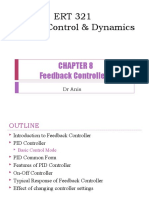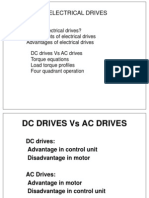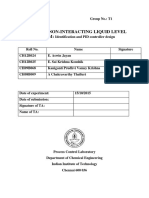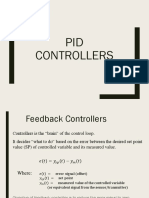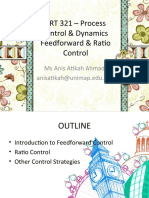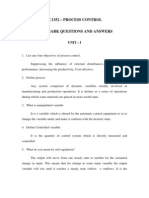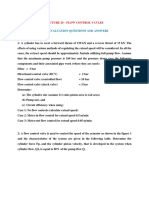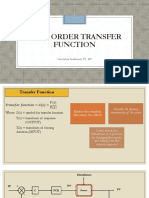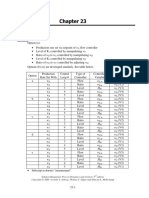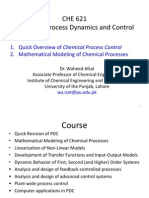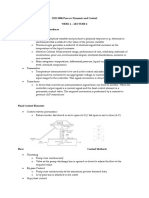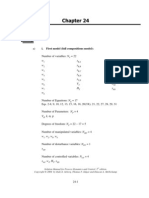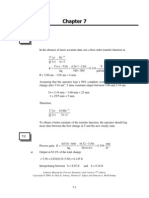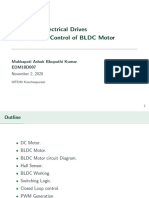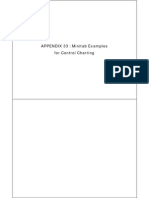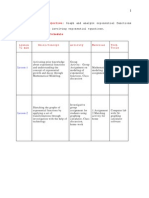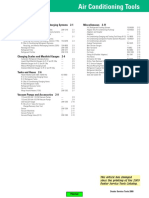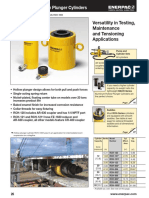123456789
8
23.1 Option (a): Production rate set via setpoint of wA flow controller Level of R1 controlled by manipulating wC Ratio of wB to wA controlled by manipulating wB Level of R2 controlled by manipulating wE Ratio of wD to wC controlled by adjusting wD Options (b)-(e) are developed similarly. See table below. Option a Production Rate Set With wA wA wA wA wA wB wB wB wB wB wC wC wC wC wC wD wD wD wD wD wE wE wE wE wE Control Loop # 1 2 3 4 5 1 2 3 4 5 1 2 3 4 5 1 2 3 4 5 1 2 3 4 5 Type of Controller Flow Ratio Level Ratio Level Flow Ratio Level Ratio Level Flow Ratio Level Ratio Level Flow Ratio Level Ratio Level Flow Ratio Level Ratio Level Controlled Variable wA,m wB,m HR1 wD,m HR2 wB,m wA,m HR1 wD,m HR2 wC,m wB,m HR1 wD,m HR2 wD,m wC,m HR1 wB,m HR2 wE,m wD,m HR2 wB,m HR1 Manipulated Variable wA (V1) wB (V2) wC (V3) wD (V4) wE (V5) wB (V2) wA (V1) wC (V3) wD (V4) wE (V5) wC (V3) wB (V2) wA (V1) wD (V4) wE (V5) wD (V4) wC (V3) wA (V1) wB (V2) wE (V5) wE (V5) wD (V4) wC (V3) wB (V2) wA (V1)
Subscript m denotes measurement.
Solution Manual for Process Dynamics and Control, 2nd edition, Copyright 2004 by Dale E. Seborg, Thomas F. Edgar and Duncan A. Mellichamp
23-1
�In options c, d, and e, valves 1 and 2 can be used interchangeably. Thus, a total of 8 options can be developed.
Advantages and Disadvantages: Each option is equivalent in the sense that 5 control loops are required: 1 flow, 2 level, and 2 ratio. Since there is no cost or complexity advantage with any option, the production rate should be set via the actual product rate, wE , i.e. option e.
RC 2
WB
FT 1
V2
WD RC 4
FT 2 FC 1
V4
FT 3
FT 4
V1
LC 3
WC
V3
LT 1
LT 2
LC 5
R1
R2
FT 5
WE
P1
P2
V5
23-2
�23.2
a)
The level in the distillate (HD) will be controlled by manipulating the recycle flow rate (D), and the level in the reboiler (HB) via the bottoms flow rate (B). Thus, HD and HB are pure integrator elements. Closed-loop TF development assuming PI controller:
GCL ( s ) = ( I )s2 + I s + 1 Kc K p I s + 1
Relations:
I = 2 Kc K p
I = 2
K p = 1 for both HD and HB loops.
12345 = 1 for a critically damped response Initial settings: K c = 0.4 I = 10 Final tuning: changed to proportional control only to obtain a faster response K c = 1
b)
The distillate composition (xD) will be controlled by manipulating the reflux flow rate (R), and the bottoms composition (xB) via the vapor boilup (V). Use a step response to determine an approximate first-order model (calculations are shown on last page).
xD 0.0012 = R 2.33s + 1 xB 0.000372 = V 2.08s + 1
23-3
�Using the Direct Synthesis method: K s + 1 1 Gc ( s ) = (1 + ) c K s G (s) = Choosing c =
1 , the settings are: 4
xD - R loop
K c = 3333.3 I = 2.33 K c = 10649.6 I = 2.08
xB - V loop c)
The reactor level (HR) will be controlled by manipulating the flow from the reactor (F). HR is a pure integrator element. Using the same relations as in part a, initial controller settings are: K c = 0.4 I = 10 After tuning: K c = 1 I = 5
23-4
�Figure S23.2a. Simulink-MATLAB block diagram for case a)
2 1 D xD
0.3408 KR
DxD/HR
KRz/HR
1 s 3 F0 5 F flow sum 1 s Level integrator Sum-z Integrator z
2 z
4 z0 F0z0/HR
F0z/HR
Dz/HR 1 HR
Figure S23.2b. Simulink-MATLAB block diagram for the CSTR block
23-5
�2 R 23.5 Hs 1 D
R V Hs D y (i+1)
xD
2 xD
x(i-1)
HD
1 HD
Top 13-20
x(i-1) L yi
3 F 4 z
F z V LF H y (i+1) xi
0 xi
FeedTray 12
x(i-1) Hs R F
yi
xB
3 xB
5 V 6 B
V B HB
4 HB
Bottom 1-11
23-6
�600
300 280 260 HD (lb-mol) 0 5 10 15 20 25 30
580
D (lb-mol/hr)
560
240 220
540
520
200 180
500
10
15
20
25
30
460
280 260 240
440
B (lb-mol/hr)
420 HB (lb-mol) 0 5 10 15 time (h) 20 25 30 220 200 180 160
400
380
360
10
15 time (h)
20
25
30
Figure S23.2d. Step change in V (1600-1700) at t=5
23-7
�1200 R (lbmol/hr) 1150 1100 1050
10
20
30 0.02 xB (mole fraction A) 0.018 0.016 0.014 0.012 0.01
xD (mole fraction A)
1250
0.955
0.95
0.945
0.94 0 10 20 30
1800 1750 V (lbmol/hr) 1700 1650 1600 1550
10
20
30
10 time (h)
20
30
560
260 240
D (lb-mol/hr)
520
500
10
20
30
HD (lb-mol)
540
220 200 180
10
20
30
520 500 480 460 440
340 320 HB (lb-mol) 0 10 time (h) 20 30 300 280 260
B (lb-mol/hr)
10 time (h)
20
30
Figure S23.2e. Step change in F (960-1060) at t=5
23-8
�F 1020 980 960 B 520 510 500 1650 180 xB 30 20 (mole fraction A) 1 (lb-mol/hr) 00(lb-mol/hr)time (h)
�* Calculation of First-Order Model Parameters for xD and xB Loops xD -R: A step change in the reflux rate (R) of +10 lbmol/hr is made and the resulting response is used to fit a first-order model:
G (s) = K s + 1 x 0.9624 0.950 K= D = = 0.0012 R 10
672489
��4
�43�24�27�
�7243
4����4� 0.632(xD ) = (0.632)(0.012) = 0.007584 = time( xD = 0.957584) = 12.33 10 = 2.33 xB -V: Similarly, a step change in the vapor boilup (V) of +10 lbmol/hr is made:
K= xB 0.00678 0.0105 = = 0.00372 V 10
Use 63.2% of the response to find � 0.632(xB ) = (0.632)(0.00372) = 0.00235 = time( xB = 0.00815) = 12.08 10 = 2.08
0.966
0.964
0.962
0.96
xD (mol fraction A)
0.958
0.956
0.954
0.952
0.95
0.948
10 Time (hr)
15
20
25
Figure S23.2g. Responses for step change in the reflux rate R
23-10
�11
x 10
-3
10.5
10
9.5
xB (mol fraction A)
8.5
7.5
6.5
10 Time (hr)
15
20
25
Figure S23.2h. Responses for step change in the vapor boilup V.
23-11
�23.3
The same controller parameters are used from Exercise 23.2
Figure S23.3a. Simulink-MATLAB block diagram
23-12
�0.96 xD (mole fraction A)
0.95
0.94 0.016 xB (mole fraction A) 0.014 0.012 0.01 400 HD (lb-mol) 300 200 100 340 HB (lb-mol) 320 300 280 260 2480 2460 3BB48lb-mol) 2440 2420 2400
10
20
30
40
50
10
20
30
40
50
10
20
30
40
50
10
20
30
40
50
10
20
30
40
50
23-13
�1150 R (lbmol/hr) 1100 1050 1000
10
20
30
40
50
xD (mole fraction A)
0.955
0.95
0.945 11 xB (mole fraction A) 10 9 8 200 HD (lb-mol) 150 100 50 290 HB (lb-mol) 285 280 275 270 2410 HR (lb-mol) 2400 2390 2380 2370
0 x 10
-3
10
20
30
40
50
10
20
30
40
50
10
20
30
40
50
10
20
30
40
50
10
20
30
40
50
time (h)
23-14
�23.4 a) The flow controller on F, the column feed stream, should be simulated in MATLAB as a constant flow. The controller parameters used are taken from those derived in Exercise 23.2.
1140 R (lbmol/hr) 1120 1100 1080 1610 V (lbmol/hr) 1600 1590 1580 520 500 480 460 440 520 500 480 460 440 520 F0 (lb-mol/hr) 500 480 460 0 10 20 30 40 50 0 10 20 30 40 50
0.952 xD (mole fraction A) 0 10 20 30 40 50
0.95
0.948 0.011 xB (mole fraction A)
10
20
30
40
50
0.0105
10
20
30
40
50
0.01 200 180 HD (lb-mol) 160 140 120 340 HB (lb-mol) 320 300 280 260 3000 HR (lb-mol) 2800 2600 2400
10
20
30
40
50
D (lb-mol/hr)
10
20
30
40
50
B (lb-mol/hr)
10
20
30
40
50
10
20
30
40
50
10
20
30
40
50
time (h)
time (h)
Figure S23.4a. Step change in F0 (+10%) at t=5
23-15
�b)
Using the approximate relation (23-17), a +10% step change in F0 will result in a reactor holdup of: HR z0 0.90 = = 2800 lbmol 1 1 1 1 k R ( ) 0.34( ) 506 960 F0 F
Using the exact relation (23-6, rearranged):
HR = F 0 z 0 Bx B (506)(0.9 0.0105) = = 2910 lbmol (0.34)(0.455) kR z
The value taken from the graph (2910) matches up with the expected value from the equation without the approximation.
3000
2900
2800
HR (lb-mol)
2700
2600
2500
2400
10
15
20
25 time (h)
30
35
40
45
50
Figure S23.4b. Step change in F0 (+10%) at t=5
23-16
�23.5 a),b) Feedforward control is implemented using the HR-setpoint equation:
H R (t ) z0 (t ) 1 1 ) kR ( F0 (t ) F
Empirical adjustment of the feedforward equation is required because it is not exact:
H R (t ) z0 (t ) + 70 1 1 kR ( ) F0 (t ) F
This adjustment matches the initial values of HR (i.e., with and without feedforward control). Parts a and b are represented graphically.
23-17
�1120 xD (mole fraction A) R (lbmol/hr) 1110 1100 1090 1605 V (lbmol/hr) 1600 1595 1590 1585 510 D (lb-mol/hr) 500 490 480 470 490 B (lb-mol/hr) 480 470 460 450 500 F0 (lb-mol/hr) 400 300 200 0 10 20 30 0 10 20 30 0 10 20 30 190 HD (lb-mol) 180 170 160 300 HB (lb-mol) 290 280 270 2500 HR (lb-mol) 2400 2300 2200 2100 0 10 20 30 no control FF control 0.95
10
20
30 0.011 xB (mole fraction A) 0.0105 0.01
10
20
30
0.0095 0 10 20 30
10
20
30
10
20
30
10 time (h)
20
30
time (h)
Figure S23.5a. Step change in z0 (-10%) at t=5
23-18
�c)
The controlled plant response is much faster with the feedforward controller (~10 hours settling time versus ~20 hours without it). Advantage: Faster response. Disadvantage: Have to measure or estimate two flow rates and one concentration, therefore significantly more expensive.
d)
23.6
a)
Use a flow controller to keep F constant (make F a constant in the simulation). Use ratio control to set F. The ratio should be based on the initial steady state values (960/460). Therefore, as F0 changes, F will be controlled to the corresponding value set by the ratio. Parts a) and b) show very different results for the two alternatives. With alternative # 3, feedforward control is necessary to keep the level in the distillate receiver from integrating. However, in alternative # 4, the control structure without the feedforward loop is superior to that with feedforward control. Responses are displayed with controlled variables adjacent to their corresponding manipulated variable.
b)
23-19
�R (lb-mol/hr)
HD (lb-mol)
2500 2000 1500 1000 550
1500 1000 500 0 350 No control (a) FF control (b)
20
40
60
20
40
60
B (lb-mol/hr)
500
20
40
60
x B (mole fraction A)
450 3000 2500 2000 1500 600 D (lbmol/hr)
HB (lb-mol)
300
250
20
40
60
0.016 0.014 0.012 0.01 z (mole fraction A) 0.52
V (lbmol/hr)
20
40
60
20
40
60
500
0.5
400 1100 1050 1000 950 520 500 480 460
20
40
60
0.48
20
40
60
2800 HR (lb-mol) 0 20 40 60 2600 2400 2200 1 x D (lbmol/hr)
F (lbmol/hr)
20
40
60
F0 (lbmol/hr)
0.95
0.9 0 20 40 60 0 20 time (h) time (h) 40 60
Figure S23.6a. Alternative #3 (with and without FF controller). Step change in F0 (+10%) at t=10
23-20
�R (lb-mol/hr)
1300 1200 1100 1000 550
400 300 200 100 350 HB (lb-mol) No control (a) FF control (b) 0 20 40 60
20
40
60
B (lb-mol/hr)
500
450 2000 V (lbmol/hr) 1800 1600 1400 600 550 500 450
20
40
60
HD (lb-mol)
300
250 0.02 x B (mole fraction A) 0.015 0.01
20
40
60
20
40
60
0.005 0.98
20
40
60
20
40
60
x D (mole fraction A)
D (lbmol/hr)
0.96
0.94
20
40
60
1100 F (lb-mol/hr) 1050 1000 950 520 500 480 460
3000
20
40
60
HR (lb-mol)
2500
2000 0.6 z (mol fraction A)
20
40
60
F0 (lb-mol/hr)
0.5
20
40
60
20
40
60
time (h)
time (h)
Figure S23.6b. Alternative #4 (with and without FF controller). Step change in F0 (+10%) at t=10
23-21
�23.7
Parts a) and b) can be satisfied by combining two or more of the previous simulations into one to compare the results together. To compare how the alternatives match up, in terms of the snowball effect, a set of arrays has been constructed. All arrays are of the form: D F 0 D z 0 HR F0 HR z0
where the response of D or HR is analyzed as a result of a step change in F0 or z0. In the notation below: S represents the occurrence of the snowball effect (>20% change in steadystate output for a 10% change in input). A represents an acceptable response (~10% change in steady-state output). B represents the best possible response (no change in steady-state output). Alternative #1 S B S B Alternative #3 A A B A Alternative #2 B S B A Alternative #4 A A B A
These results indicate that Alternative #2 still exhibits a snowballing characteristic, but in HR instead of D. Alternatives #3 and #4, on the other hand, eliminate the effect altogether.
23-22
�1400 R (lb-mol/hr)
400 300 200 100 350 HB (lb-mol) Alternative #1 Alternative #2 Alternative #3 Alternative #4
1200
1000 550 B (lb-mol/hr)
20
40
60
HD (lb-mol)
20
40
60
500
300
450 2000 V (lbmol/hr) 1800 1600 1400 D (lbmol/hr) 700 600 500 400 0.6
20
40
60
250 0.02 xD (mole fractionxB (mole fraction A) A) 0.015 0.01
20
40
60
20
40
60
0.005 0.96
20
40
60
0.94
z (mole fraction A)
20
40
60
0.92 3000 HR (lb-mol)
20
40
60
0.5
2500
0.4 F0 (lb-mol/hr) 520 500 480 460
20
40
60
2000 1200 F (lb-mol/hr) 1100 1000 900
20 time (h)
40
60
20
40
60
20
40
60
Figure S23.7a. Step change in F0 (+10%) at t=10
23-23
�xB (mole fraction A)
11 10 9 8 0.96
x 10
-3
20
40
60
0.95
0.94
20
40
60
23-24
�23.8
Begin with a dynamic energy balance on the reactor:
CP d ( H R (TR TRef )) 1 = CP F0 (T0 TRef ) + CP D (TD TRef ) C P F (TR TRef ) H R kz Q
dt 1 = UA(T T ) Q R C
This model can be simplified using the mass balance:
dH R = F0 + D F dt
And, rearranging to get an equation for modeling the reactor temperature:
1 dTR = [ F0CP (T0 TR ) + DCP (TD TR ) UA(TR TC ) H R kz ] dt CP H R
It is clear from the following figures that the temperature loop is much faster than the interconnected level-flow loops. This characteristic allows the reaction rate multiplier to settle before it can affect the other variables.
23-25
�616.45 Thermal model Constant temperature z (mol fraction A) 30 40 50 60 0.55
616.44
TR (R)
616.43 616.42
0.5
616.41
0.45
616.4
0.4
30
40
50
60
597 596 595 TC (R) 594 593 592 591 590 30 40 50 60
1300 1250 1200 F (lb-mol/hr) 1150 1100 1050 1000 950 30 40 50 60
0.341
700
0.3405 KR (lb-mol/hr)
650 D (lb-mol/hr) 30 40 50 60
600
0.34
550
0.3395 500
0.339
450
30
40
50
60
Time (hr)
Figure S23.8a. Step change in F0 (+10%) at t=30 (Constant temperature simulation does not include a thermal model)
23-26
�616.45 Thermal model Constant temperature z (mol fraction A) 30 40 50 60 0.55
616.44
TR (R)
616.43 616.42
0.5
616.41
0.45
616.4
0.4
30
40
50
60
600
1000
598 F (lb-mol/hr) 30 40 50 60 950
TC (R)
596
594
900
592
590
850
30
40
50
60
0.341
550
0.3405 KR (lb-mol/hr) D (lb-mol/hr) 30 40 50 60 500
0.34
450
0.3395
0.339
400
30
40
50
60
Time (hr)
Figure S23.8b. Step change in z0 (-10%) at t=30 (Constant temperature simulation does not include a thermal model)
23-27






